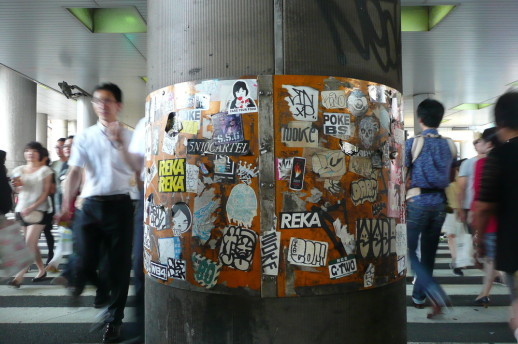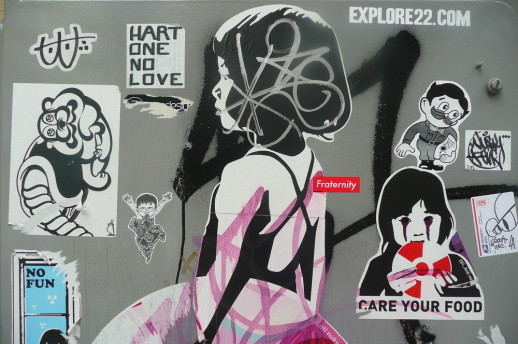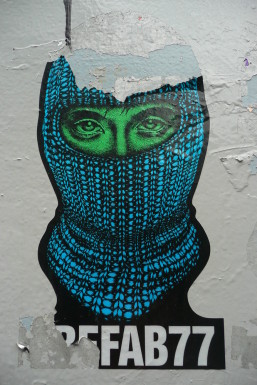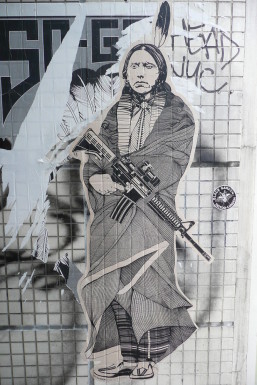Tokyo Sticker Bombing

Graffiti. It isn’t really a term you hear much these days. Think of ‘graffiti’ in the traditional sense of the word and your mind conjures up images of heavily tagged New York train carriages, rough-and-ready murals under bridges, scarves covering faces, nighttime. What you don’t necessarily think of is Tokyo.
Unlike other art-strong cities like NYC, London and Berlin, there really isn’t much spray work in Tokyo. Yeah you see the odd tag on a vending machine, the odd mural down an alleyway but these are few and far between. So why the lack of spraycans? Well maybe the authorities are quick to get rid of the work before it’s barely dried. More likely, however, is that it lies with the age-old Japanese respect for social etiquette and cleanliness. From a young age it’s hammered home. You don’t drop litter. You don’t cause a social nuisance. And you sure as hell don’t cover walls in paint.
But while aerosols may be out, adhesives are most definitely in.
Sticker art is everywhere. It’s so prevalent that you may have unconsciously become accustomed to it, not even realising it’s there. When was the last time you really had a look around you when walking down the street. Lampposts. Electrical boxes. Billboards. Fire hydrants. Art is all around us. Every single day on every corner. These stickers have become as much a part of Tokyo’s artistic identity as the galleries scattered across the city. It’s a growing, evolving, ever-present form of expression. You’re bound to have seen 281’s anti-nuke messages plastered all over Shibuya. If you haven’t, well you haven’t been looking hard enough.


With so much variation in terms of medium, the term graffiti is dying a slow death. These days, everything is being loosely bundled under the banner ‘street art’. It’s big business too. Banksy is a household name. Stencils, adhesives and installations are now all widely used: a spraycan no longer the only weapon of choice. As well as showing signs of artistic progression, it also makes perfect logistical sense. With over 13 million people living in the metropolis, you can’t just set up shop with your cans and go to work in the middle of the street. You’re gonna get caught.
Stickers over spray: it’s logistics, pure and simple. Spray work of any decent quality takes time; even simple stencil work takes some amount of exposure. Stickers – and even large murals using paste – reduce the risk of a trip to the koban. Sticker artists can produce thousands of prints, and while some of the big names (B.N.E. & Obey Giant to name just a few) use aggressive permanent vinyl, many artists choose to use adhesives that will wear off over time. Again, it harks back to the good old tradition of cleaning up after yourself.
So where are the best spots to spot sticker art in Tokyo? Well, it’s everywhere, seriously. But some spots that offer regular, heavy rotation include Harajuku Street, Center Gai in Shibuya and the bridges surrounding Miyashita Skatepark.





